8+ Sample Lead Management Report
-
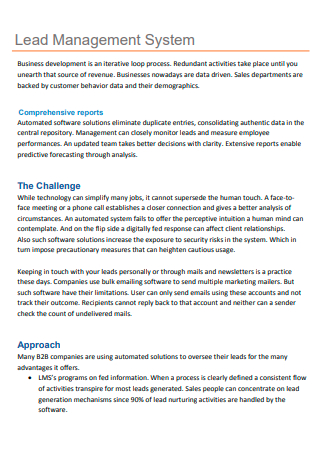
Lead Management System Report
download now -

Basic Lead Management Report
download now -
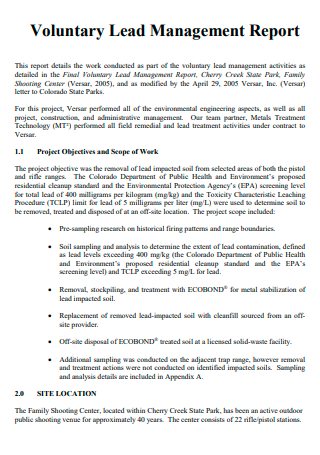
Voluntary Lead Management Report
download now -

Lead Management Program Report
download now -
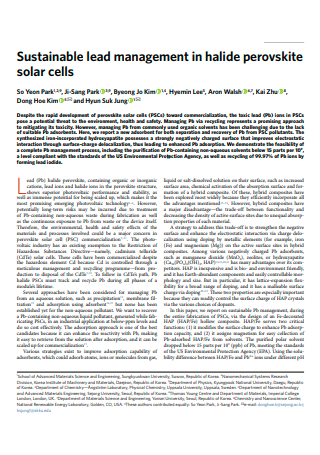
Sustainable Lead Management Report
download now -
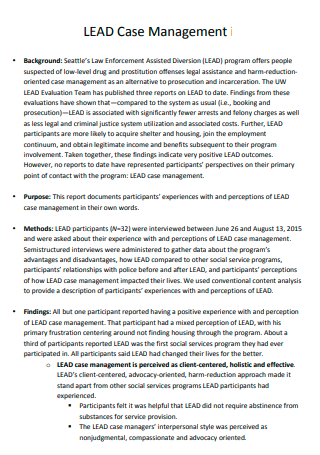
Lead Case Management Report
download now -
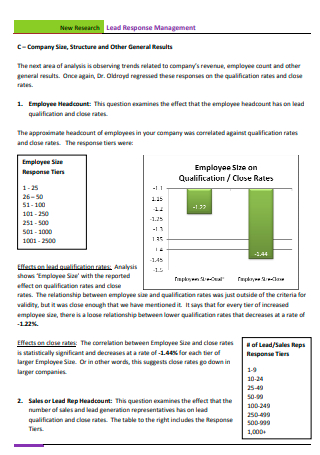
Lead Response Management Report
download now -
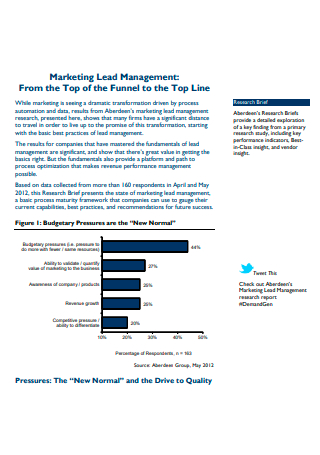
Marketing Lead Management Report
download now -

Lead Charter School Auditors Management Report
download now
FREE Lead Management Report s to Download
8+ Sample Lead Management Report
What Is a Lead Management Report?
What’s Inside a Management Report?
Steps in a Lead Management Process
FAQs
What is the difference between a lead and a customer?
How important is an effective management report?
How important is time management in the management reporting process?
What Is a Lead Management Report?
Before we define what a lead management report is, what is the process of lead management? In a nutshell, lead management refers to strategies, processes, and procedures that are geared to produce new potential business clients. In longer terms, lead management is the process of identifying and tracking potential customers or gathering and structuring lead information and managing relationships with them. Lead management, when done correctly, will serve as the foundation of a successful sales organization. There is no need for a customer relationship management strategy or even a sales staff if there are no viable leads.
A lead management report is an essential document utilized by different companies to efficiently track their teams’ means of contacting incoming leads, identifying who these prospects are, and who controls each lead. In other words, anyone may use this report to engage with leads, monitor lead activity, and monitor the leads for their organization. This document also improves verification efficiency and reduces the likelihood of leads being lost due to an incomplete or sluggish follow-up, resulting in increased sales income for the organization.
What’s Inside a Management Report?
A lead management report is one of the types of a management report which is a document that helps present various kinds of data from business departments in an understandable way which aids in a better decision-making process. With that being said, here are the important contents of an effective management report:
Steps in a Lead Management Process
As stated earlier, the process of lead management helps different companies understand the customer’s different types of specific problems and their requirements in order to have a better understanding of them. With that being said, here are the steps that usually comprise the entire lead management process.
-
1. Capturing the Leads
The first step of the lead management process would be to acquire the leads that are desired by the company. The first, and arguably most crucial, possible disconnect in the lead management process is lead acquisition. The significance of this procedure is closely tied to a number of consumer response theories that emphasize the appropriateness and responsiveness of the customer experience as vital factors in converting potential consumers into real customers. Lead management connects your lead generation efforts to sales prospects by gathering leads from multiple sources into a single platform and storing pertinent information such as origin, campaign name, and so on.
-
2. Enriching and Tracking the Leads
After capturing the potential leads, this step will soon follow, which will serve to enrich and track the gathered leads. In this step, When enriching and tracking your leads, it is critical that your employees do not waste time seeking information on each lead or manually entering data. Take advantage of software instead. A lead management program follows a lead’s activity on your website automatically. These gathered and recorded behaviors will provide vital data, allowing salespeople to understand the customer’s purpose and customize sales attempts. This stage will also tell you if they want to have a sales conversation with you.
-
3. Qualifying the Leads
After performing an enriching and tracking process of the leads, this is the next step that will follow. One thing to note is that in this step, One efficient approach to employ a contact scoring model in the lead qualifying process is to rate your contacts based on their desire in your service or product, demographic details, company engagement, and so on. Using lead management software throughout the qualifying process is important since it is both cost-effective and valuable to the sales and marketing teams.
-
4. Lead Distribution
After doing the qualification process for your leads, it’s time to distribute them. In this step, having A good lead management system is beneficial because it automatically allocates prospects to salespeople across areas on a round-robin basis, allocates phone numbers to regions, and routes specific calls to sales teams. Furthermore, using lead management systems or software for your sales staff allows them to prioritize given prospects rather than manually looking for fresh leads in the customer relations management system. The key argument from this stage is that the sooner your sales staff engages prospects, the more probable it is that they will convert them.
-
5. Nurturing Process
After having undergone the distribution process, the nurturing process for the leads will soon follow. This will also serve as the last step. You might ask yourself why this step is necessary. Because not all of your leads are sales-ready, lead nurturing is essential. Many of them may still be in the research or awareness stage, attempting to determine whether your solution would alleviate their pain points. Lead nurturing is to educate and illustrate the worth of your product or service. Furthermore, lead nurturing allows businesses to educate and demonstrate their value to leads through content and promotional offers, assisting them in their decision-making process.
FAQs
What is the difference between a lead and a customer?
A lead is someone who has expressed interest in your brand, product, service, or marketing material and may be obtained through various brand awareness initiatives, content marketing, commercials, and so on. A customer, on the other hand, is someone who has conducted business with you. In other words, he or she purchased your goods or service. They are obtained through various discounts, trials, demonstrations, and other means. To conclude in short terms, a lead is someone who has the potential to do business with you, whereas a customer is someone who has already done business with you.
How important is an effective management report?
The significance of an effective management report is that it acts as a critical tool for the running of any business. It enables you to take a more realistic look at your company’s position, allowing you to make safer and more forceful decisions. You may use the report to study the outcomes and rethink the measures that aren’t working. This is due to the fact that it provides the specifics of the firm as well as its performance throughout the period being assessed.
How important is time management in the management reporting process?
When we discuss time management in the reporting process, we refer to methods in which you can be consistent in your timeline of reporting and sending out pre-reads prior to the main reporting process. When it comes to reporting schedule consistency, you always should set a data deadline and implement it across all areas of your business. Allowing reports to be sent in late ensures a frantic process in which everyone is rushing to obtain data. When it comes to the value of delivering pre-reads, keep in mind that releasing your slides or data ahead of time will help organize your team for what they will see during the reporting process.
As stated earlier, effective lead management can prove to be a background for a successful sales operation. And with a properly prepared lead management report, businesses have the opportunity to be efficient in managing and pursuing their leads and prevent them from being lost due to any inconsistencies. In this article, different examples of a lead management report exist as samples for you to look at should you need to create one.
